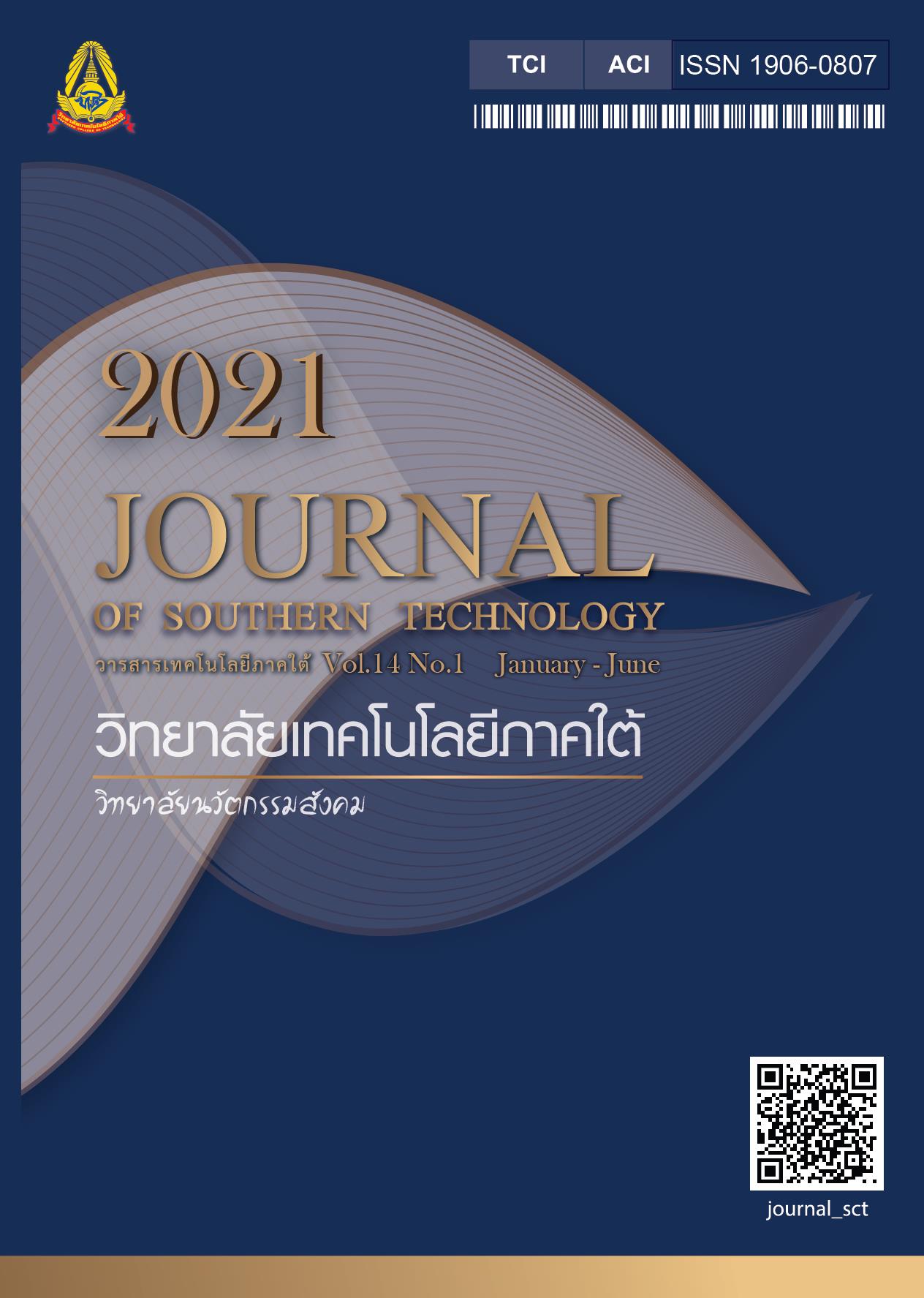Factors Influencing Preventive Behaviors of Nursing Students against Nosocomial Infections
Main Article Content
Abstract
Nosocomial infection is a common type of complications and usually serious. Thus, nursing students should be careful in dealing with patients. Observing nosocomial preventive and control measures is very crucial. This research aimed to study the level of preventive behaviors against nosocomial infections and factors predicting the behaviors. Data were collected from 108 third-year and fourth-year nursing students who were enrolling in Boromarajonani College of Nursing, Nakhon Si Thammarat. They were selected by means of simple random sampling. A set of 4 questionnaires were used as research instruments to elicit general information, knowledge about nosocomial infections, awareness of nosocomial infections and preventive behaviors regarding against nosocomial infections; respectively. Results revealed that the students’ preventive behaviors against nosocomial infections in overall and in each aspect were at high levels; namely in the aspects of using preventive tools, washing hands, environment and waste management, and prevention of accidents. The factor of perceived barriers to prevention of the infections predicted the behaviors of nursing students with statistical significance indicating 14.8 percent of the variance (R2=.148, p<.01). The findings can be used to plan and develop teaching and learning procedures for practical nursing courses. This can help nursing students to have appropriate preventive behaviors against nosocomial infections. Finally, they can provide services according to the nursing standards which will result in good quality nursing services in the future.
Article Details
-
Authors must agree to the journal publication rules and allow the editors to edit the manuscripts for publication.
-
Author’s right belongs to the author but Journal of Southern Technology holds the right of first publication and thus allow readers to use the article for the purpose of education but not commercial.
References
Aunprom-me, Si., & Aunprom-me, Sr. (2013). Risk perceptions and preventive behaviors related to the Novel Influenza (H1N1) Pandemic in Nursing Students. Journal of Nurses’ Association of Thailand, Northeastern Division, 31(1), 162-168. [in Thai]
Bamrasnaradura Infectious Diseases Institute. (2013). A manual for the prevention and control of infection in the hospitals. Bangkok: The Agricultural Co-operative Federation of Thailand. [in Thai]
Boonmee, P., Fukfon, K., & Prompao, P. (2013). Incidence of needlestick and sharps injuries and blood and body fluid exposures in nursing students of Boromarajonani College of Nursing, Phayao. Journal of Nursing and Education, 6(2), 124-134. [in Thai]
Brosio, F., Kuhdari, P., Stefanati, A., Sulcaj, N., Lupi, S., Guidi, E., … Gabutti, G. (2017). Knowledge and behavior of nursing students on theprevention of healthcare associated infections. Journal of Preventive Medicine Hygiene, 58(2), E99-E104.
Colet, P.C., Cruz, J.P., Cacho, G., Al‐Qubeilat, H., Soriano, S.S., & Cruz, C.P. (2018). Perceived infection prevention climate and its predictors among nurses in Saudi Arabia. Journal of Nursing Scholarship, 50(2), 134-142.
Glanz, K., Rimer, B. K., & Lewis, F. M. (2002). Health Behavior and Health Education: Theory, Research and Practice. San Francisco: Wiley & Sons.
Indrawattana, N., & Vanaporn, M. (2015). Nosocomial infection. Journal of Medicine and Health Sciences, 22(1), 81-92, [in Thai]
Laoprasopwattana, K. (2009). Hospital-acquired Infection. Songkhla: Chanmuang Press. [in Thai]
Napradit, A. (2016). Knowledge attitudes and practices of standard precaution among personnel. The Journal of Prapokklao Hospital Clinical Medical Education Center, 33(1), 6-19. [in Thai]
National Antimicrobial Resistance Surveillance Center: NARST. (2013). The Situation of Antibiotic Resistance in Thailand. Retrieved May 26, 2020 from http:// narst.dmsc. moph.go.th/news001.html [in Thai]
Phumart, P., Phodha, T., Thamlikitkul, V., Riewpaiboon, A., Prakongsai, P., Limwattananon, S. (2012). Health and economic impacts of antimicrobial resistant infections in Thailand: A Preliminary Study. Journal of Health Systems Research, 6(3), 352-360. [in Thai]
Sawasrak, K., Unahalekhaka, A., & Lertwatthanawilat, W. (2015). Barriers to and facilitators of infection prevention practices among professional nurses in tertiary care hospitals. Nursing Journal, 42(4), 25-35. [in Thai]
Sukheerat, S., Rawiworrakul, T., & Kaewboonchoo, O. (2012). Association between health belief and work-related infection prevention behavior among first responders, Angthong Province. Journal of Boromarajonani College of Nursing, Bangkok, 28(1), 1-13. [in Thai]
Sukwatjanee, A. (2015). Factors affecting infection prevention behavior among nurses working at emergency rooms. Journal of Behavior Science for Development, 7(1), 253-265. [in Thai]
Suwannobol, N., Tapin, J. & Aanansawat, S. (2018). A study of the infection situation, preventive actions and infection control in hospitals, Northeastern Region. The Journal of Boromarajonani College of Nursing, Nakhonratchasima, 24(2), 78-95.[in Thai]
Tabachnick, B. G., & Fidell, L. S. (2013). Using Multivariate Statistics (6th ed.). Boston: Pearson Education, Inc.
Tangkittipaporn, J. (2013). General Psychology. Bangkok: Chulalongkorn University Press. [in Thai]
The Royal Institute. (2011). Royal Institute Dictionary 1999. Retrieved October 7, 2018, from http:// rirs3.royin . go.th/dictionary.asp [in Thai]
World Health Organization. (2018). The burden of health care-associated infection worldwide. World Health Organization. Retrieved August 25, 2018, from https://www.who.int/ gpsc/ country_work/burden_hcai/en/

